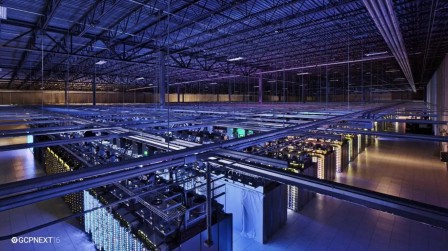I just finished the two-day GPCNext16 talks put on by Google to showcase what is upcoming with their Google Cloud Platform. In several areas I was just stunned by what they are bringing to developer's doorsteps. Yes, yours, mine, anyone who wants to enter the arena of world class platform coding.
I honestly admit, as much as the infographics and explaining helped grasp the extremely high level technology being developed, a lot was just too much to take in. But, what I could understand just left me amazed what processing power Google has, and is making accessible to the common user, users of Open Source, all over the world. The areas that impressed me the most were: The Google App Engine, Google Vision API, The Edge Server Farms, and most highly, the mighty Google Cloud Platform Virtual Machine application itself.
The Google App Engine is an environment where coders in PHP, RUBY, Python, Angular.js, and soon other open source platforms can test, host, and deliver their apps on Google servers. It is all automatically scalable. The ceiling point of fee based hosting is pretty high. They want you to stay. People can talk about portability, but why? Unless the programmer wants to deal with all the scaling factors themselves, and start back at the beginning and work out the efficiency/load balancing options. This takes the independent app developer into a whole new environment, to ramp up to Uber / Lyft / Snapchat levels. Business development supporting these ventures will be able to gauge much more clearly the readiness to market and venture capital will reward this.
Google Vision API is extremely powerful, combined with AI, endless possibilities. A photo of anything can be taken, Google Vision will return what it is, including what breed of cat or dog it is, what is the general mood, just all kinds of info with percentages of confidence. All were spot on in the 92% levels. Just amazing. Google displayed graphic representations of the data webs / inter-relatedness of all the images it used to draw the conclusion and it was just staggering the reach of the data. The data web looked more like thick, multi-colored cotton candy in a big ball.
Along these same lines, they spoke of real time text transcriptions of conversations across mobile platforms (Android), this could be assessed in a similar web. Honestly? I hope law enforcement is accessible to this kind of technology. When I hear about bad things getting shut down before harm is done, it really makes me want this on my side.
They showed the hardware that is powering all this, the Google EDGE server clusters. I would say there were about thirty or forty across the globe. An idea of what the map showed was three or four on the west coast, eight or so in the Midwest, about seven to ten east of the Mississippi River, one in Brazil, one in Argentina, etc. that kind of distribution. Below is a photo of an actual EDGE processing cluster unit. Just amazing power.
The most telling of how useful this will be in the world of development was the actual Google Cloud Platform Virtual Machine service itself. For those that may not know, the general idea is to have a "computer" virtually placed in the cloud. Just like a computer you use at home, but set up virtually on huge processing clouds in the EDGE environment. In this virtual machine environment, the user can configure a "machine" any way they wish. The can have a LAMP stack (Linux, Apache, MySQL, PHP), a MEAN stack (MongoDB, Express, Angular.js, Node.js), Windows, NginX, Ruby, or Python running, anything, all system configuration at the drop of a hat. It's all container-driven, so you can focus on your app's efficiency. You set up the machine by clicking on the options at cloud.google.com , and you're set to run your app, test your app's performance on that set up you choose. Load performance can be tested with that Apache thing, forgot what it's called, to simulate return performance benchmarks. Just good stuff to grassroots programmers, and groups like startup bioinformatics organizations. No longer is this reserved for groups like the J. Craig Venter Corporation that can afford this processing power, but now many can get ideas going.
This is a huge, huge benefit to small startups that already have their staff programmers and can't afford hiring specialized skillsets they don't have. I just think, this will put a dent in some NginX programmer's wallet somewhere. But still, this is just a testing virtual environment. If the user wished to stay and expand in the virtual machine, they could. But there is a cost attached to that naturally. Up to a good testing point, it's still very affordable to even the tightest project budget. Of course Google Analytics can be incorporated into all of this, or at least the Analytics Premium can(?).
Yeah, Big Data is turning out to be a pretty cool guy. Kind of like a rich uncle that lets you use his Google D-WAVE X2 to do your homework on.

A Google EDGE processing facility, one of about thirty or forty across the world.